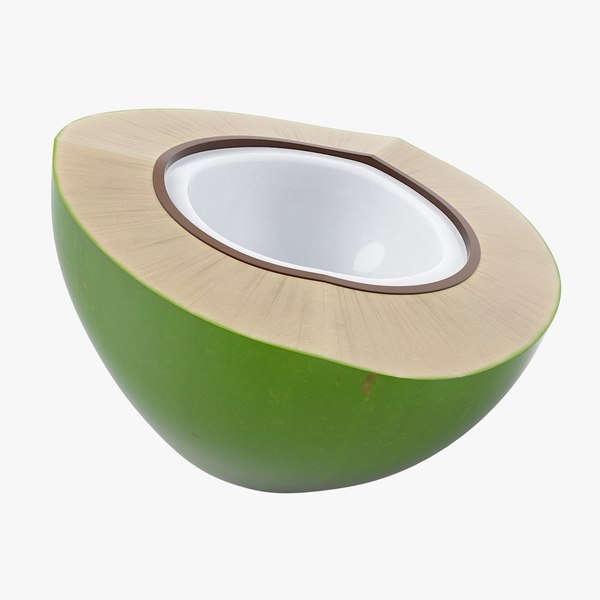Dirty Facts About Do People Put Salt On Watermelon Revealed
已有 262 次阅读 2024-03-25 12:20 标签: orange meated types melons called
In a world where vibrant colors dominate our daily lives, Mother Nature occasionally surprises us with her unique creations. One such marvel is the yellow watermelon, a fruit that has been gaining popularity in recent years. While the traditional red watermelon has always been a summer staple, the yellow variety is captivating taste buds and captivating consumers with its vibrant hue and delightful flavor. But where do these yellow watermelons come from, and what makes them so special?
Yellow watermelons, also known as yellow-fleshed watermelons, are a natural variation of the traditional red-fleshed watermelon. In case you loved this information and you wish to receive more information concerning salt or sugar on watermelon i implore you to visit our own web-page. They are not genetically modified or artificially altered in any way. The vibrant yellow color of their flesh is a result of the presence of lycopene, a powerful antioxidant commonly associated with red fruits and vegetables. In yellow watermelons, lycopene is present in lower quantities, allowing other pigments, such as beta-carotene, to shine through, giving them their distinct golden hue.
The origin of yellow watermelons can be traced back to Africa, where watermelons are believed to have originated thousands of years ago. Watermelons have been cultivated in Africa since ancient times, and their seeds were carried across the world through trade routes. Over time, farmers and horticulturists selectively bred watermelons to enhance certain traits, including color, flavor, and size.
 The yellow watermelon variety was first discovered in the Kalahari Desert, a vast and arid region spanning parts of Botswana, Namibia, and South Africa. The desert's extreme conditions, with scorching temperatures and minimal rainfall, played a crucial role in the development of this unique fruit. The yellow watermelon's ability to thrive in such harsh environments made it a valuable food source for local communities.
The yellow watermelon variety was first discovered in the Kalahari Desert, a vast and arid region spanning parts of Botswana, Namibia, and South Africa. The desert's extreme conditions, with scorching temperatures and minimal rainfall, played a crucial role in the development of this unique fruit. The yellow watermelon's ability to thrive in such harsh environments made it a valuable food source for local communities.
 As the popularity of yellow watermelons grew, farmers in various regions across the globe started cultivating them. Today, they can be found in countries such as the United States, Japan, China, and Brazil. In the United States, Georgia and Texas are known for their yellow watermelon production, with farmers dedicating acres of land to grow this vibrant fruit.
As the popularity of yellow watermelons grew, farmers in various regions across the globe started cultivating them. Today, they can be found in countries such as the United States, Japan, China, and Brazil. In the United States, Georgia and Texas are known for their yellow watermelon production, with farmers dedicating acres of land to grow this vibrant fruit.
The taste of yellow watermelons is often described as sweeter and milder than their red counterparts. Their flesh is tender, crisp, and refreshingly juicy, making them a perfect summer treat. The unique flavor profile, combined with their eye-catching appearance, has made yellow watermelons a hit among fruit enthusiasts, foodies, and health-conscious individuals.
Apart from their delightful taste, yellow watermelons also offer numerous health benefits. They are a rich source of vitamins A and C, which are essential for maintaining healthy skin, boosting the immune system, and promoting overall well-being. Additionally, yellow watermelons contain high levels of potassium, which helps regulate blood pressure and maintain proper heart function.
 With their rising popularity, yellow watermelons have become a sought-after item in grocery stores, farmers' markets, and even online platforms. Chefs and home cooks alike have embraced this unique fruit, incorporating it into various recipes, including salads, smoothies, and desserts.
With their rising popularity, yellow watermelons have become a sought-after item in grocery stores, farmers' markets, and even online platforms. Chefs and home cooks alike have embraced this unique fruit, incorporating it into various recipes, including salads, smoothies, and desserts.
In conclusion, the origin of yellow watermelons can be traced back to Africa, where they have been cultivated for centuries. These golden-hued fruits are a natural variation of the traditional red watermelon and have captivated the taste buds of people around the world. With their unique flavor, health benefits, and eye-catching appearance, yellow watermelons have become a symbol of nature's creativity and a delightful addition to our summer fruit platters.
Yellow watermelons, also known as yellow-fleshed watermelons, are a natural variation of the traditional red-fleshed watermelon. In case you loved this information and you wish to receive more information concerning salt or sugar on watermelon i implore you to visit our own web-page. They are not genetically modified or artificially altered in any way. The vibrant yellow color of their flesh is a result of the presence of lycopene, a powerful antioxidant commonly associated with red fruits and vegetables. In yellow watermelons, lycopene is present in lower quantities, allowing other pigments, such as beta-carotene, to shine through, giving them their distinct golden hue.
The origin of yellow watermelons can be traced back to Africa, where watermelons are believed to have originated thousands of years ago. Watermelons have been cultivated in Africa since ancient times, and their seeds were carried across the world through trade routes. Over time, farmers and horticulturists selectively bred watermelons to enhance certain traits, including color, flavor, and size.
 The yellow watermelon variety was first discovered in the Kalahari Desert, a vast and arid region spanning parts of Botswana, Namibia, and South Africa. The desert's extreme conditions, with scorching temperatures and minimal rainfall, played a crucial role in the development of this unique fruit. The yellow watermelon's ability to thrive in such harsh environments made it a valuable food source for local communities.
The yellow watermelon variety was first discovered in the Kalahari Desert, a vast and arid region spanning parts of Botswana, Namibia, and South Africa. The desert's extreme conditions, with scorching temperatures and minimal rainfall, played a crucial role in the development of this unique fruit. The yellow watermelon's ability to thrive in such harsh environments made it a valuable food source for local communities. As the popularity of yellow watermelons grew, farmers in various regions across the globe started cultivating them. Today, they can be found in countries such as the United States, Japan, China, and Brazil. In the United States, Georgia and Texas are known for their yellow watermelon production, with farmers dedicating acres of land to grow this vibrant fruit.
As the popularity of yellow watermelons grew, farmers in various regions across the globe started cultivating them. Today, they can be found in countries such as the United States, Japan, China, and Brazil. In the United States, Georgia and Texas are known for their yellow watermelon production, with farmers dedicating acres of land to grow this vibrant fruit.The taste of yellow watermelons is often described as sweeter and milder than their red counterparts. Their flesh is tender, crisp, and refreshingly juicy, making them a perfect summer treat. The unique flavor profile, combined with their eye-catching appearance, has made yellow watermelons a hit among fruit enthusiasts, foodies, and health-conscious individuals.
Apart from their delightful taste, yellow watermelons also offer numerous health benefits. They are a rich source of vitamins A and C, which are essential for maintaining healthy skin, boosting the immune system, and promoting overall well-being. Additionally, yellow watermelons contain high levels of potassium, which helps regulate blood pressure and maintain proper heart function.
 With their rising popularity, yellow watermelons have become a sought-after item in grocery stores, farmers' markets, and even online platforms. Chefs and home cooks alike have embraced this unique fruit, incorporating it into various recipes, including salads, smoothies, and desserts.
With their rising popularity, yellow watermelons have become a sought-after item in grocery stores, farmers' markets, and even online platforms. Chefs and home cooks alike have embraced this unique fruit, incorporating it into various recipes, including salads, smoothies, and desserts.In conclusion, the origin of yellow watermelons can be traced back to Africa, where they have been cultivated for centuries. These golden-hued fruits are a natural variation of the traditional red watermelon and have captivated the taste buds of people around the world. With their unique flavor, health benefits, and eye-catching appearance, yellow watermelons have become a symbol of nature's creativity and a delightful addition to our summer fruit platters.







发表评论 评论 (0 个评论)